#Kodak Photo Paper
Explore tagged Tumblr posts
Text
Exploring the Differences: Matte vs. Glossy Photo Papers
In the world of photography and printing, the choice between glossy and matte photo papers plays a crucial role in determining the final look and feel of your images. Each type offers distinct characteristics that cater to different preferences and purposes. Let's delve into the nuances of glossy and matte photo papers to help you make an informed decision for your printing needs.

Understanding Glossy Photo Papers: Glossy photo papers are renowned for their vibrant colors and sharp image reproduction. The glossy surface creates a reflective sheen that enhances the saturation and contrast of your photographs. This makes them ideal for capturing the brilliance of colorful landscapes, portraits, and vibrant images with deep blacks and rich hues.
Exploring Matte Photo Papers: On the other hand, matte photo papers feature a non-reflective surface that produces a soft, velvety texture. This results in a more subdued and understated look, perfect for artistic prints, black and white photography, and images with intricate details. Matte papers reduce glare and fingerprints, providing a more tactile viewing experience.
Factors to Consider: When choosing between glossy and matte photo papers, several factors come into play:
Lighting Conditions: Glossy papers perform well in well-lit environments where reflections can enhance the image's impact. Matte papers are preferred in areas with controlled lighting or for displays where glare is a concern.
Subject Matter: Consider the subject matter of your photographs. Glossy papers excel in capturing vivid colors and sharp details, while matte papers complement softer tones and textures.
Personal Preference: Ultimately, your choice depends on your aesthetic preferences and the intended use of your prints. Experimenting with both types allows you to discover which best suits your style and vision.
Advantages of Glossy Photo Papers:
Intense Color Saturation: Glossy papers showcase vibrant colors and deep contrasts, making images appear more dynamic and eye-catching.
Sharp Image Reproduction: The smooth surface of glossy papers ensures crisp details and sharpness, ideal for high-resolution prints and professional photography.
Quick Drying Time: Glossy prints dry quickly, reducing the risk of smudging and ensuring immediate handling and display.
Benefits of Matte Photo Papers:
Reduced Glare: Matte papers offer a glare-free viewing experience, making them suitable for framed displays, galleries, and exhibitions.
Texture and Feel: The textured surface of matte papers adds a tactile dimension to prints, inviting viewers to engage with the artwork on a sensory level.
Artistic Appeal: Matte papers lend a timeless and sophisticated look to photographs, evoking a sense of elegance and authenticity.
Choosing the Right Paper: Selecting the perfect photo paper depends on your specific requirements and artistic vision. Consider the following factors:
Print longevity and durability
Surface texture and finish
Print size and framing options
Budget and cost considerations
Conclusion: Whether you opt for glossy or matte photo papers, both offer unique advantages and aesthetic qualities that enhance the visual impact of your prints. Experimenting with different papers allows you to explore new creative possibilities and tailor your printing process to suit your individual style and preferences.
In summary, glossy photo papers excel in vibrant color reproduction and sharpness, while matte papers offer a subdued elegance and tactile appeal. By understanding the characteristics of each paper type, you can elevate your printing projects and bring your images to life with stunning clarity and depth.
0 notes
Text
Top PVC Tray Manufacturer
Looking for a reliable PVC tray manufacturer? Look no further than Bigfalcon Group! We offer top-quality PVC trays that are perfect for your business needs. Check out our wide range of options online and choose the best one for you. For more details, call us at 9137559944.
#glossy photo paper#a4 size photo paper#kodak photo paper#aadhar pvc card#premium lamination pouch#lamination pouch a4 size#sticker photo paper#PVC Tray Manufacturer#Transparent sticker sheet#Sticker photo paper
0 notes
Text

Telling Stories through Paper Mache
Staring at the Sun series
Hasselblad 500c/m
Kodak Tmax 400iso
#Telling Stories through Paper Mache#photography#photo#Farwell House Artist Residency#art#art show#artist#artists on tumblr#film#film photography#Staring at the Sun#summer#Paper Mache#Telling Stories#tatoos#photographers on tumblr#original photographers#photographerslife#film is not dead#hasselblad#kodak#americana#road trip#travel#illinois
22 notes
·
View notes
Text


Recent Acquisition - Ephemera Collection
Book of Formulas for Eastman Papers. Vitava, Velox, Azo, Ad-Type, Eastman Portrait Bromide, Eastman Bromide, PMC Bromide, Line Solar Bromide. Eastman Kodak Company, Rochester NY. October 1929
15 notes
·
View notes
Text

parts
#misspaperclip#polaroid pictures#polaroid#polaroid photography#film camera#film photography#analogue#analog photography#kodak#analog#polaroid camera#instant photography#collage#collage art#mixed media#mixed media art#surrealism#traditional collage#analog collage#mixedmedia#collage artist#collages#paper collage#photo collage#girlhood#girlblogger#just girly things#girlblog#this is what makes us girls#this is a girlblog
6 notes
·
View notes
Text
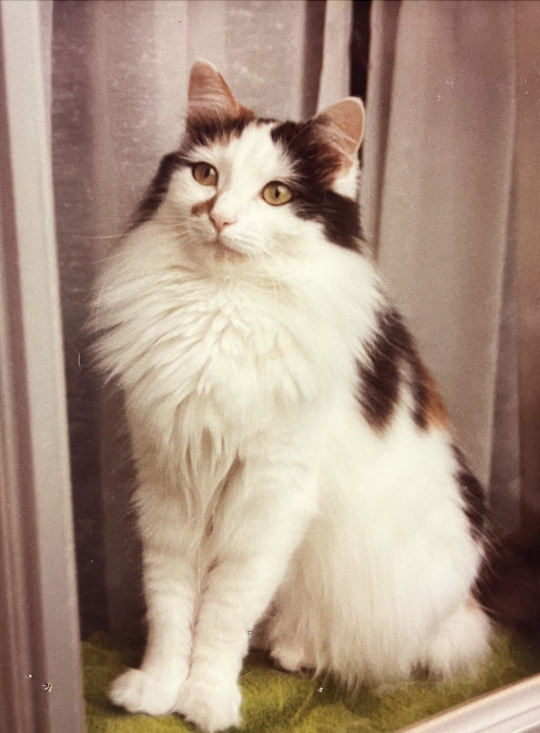
This photo was sold to me as being “ca. 1960s” but it’s definitely not. Gorgeous cat and picture but I could guess by the colors and the detail that it was 1980s, and confirmed when I got it with the watermark on the back. It was only used by Kodak on their Ektacolor papers between 1985 - 1989. 🤷🏻♀️
859 notes
·
View notes
Text
Big Tech disrupted disruption
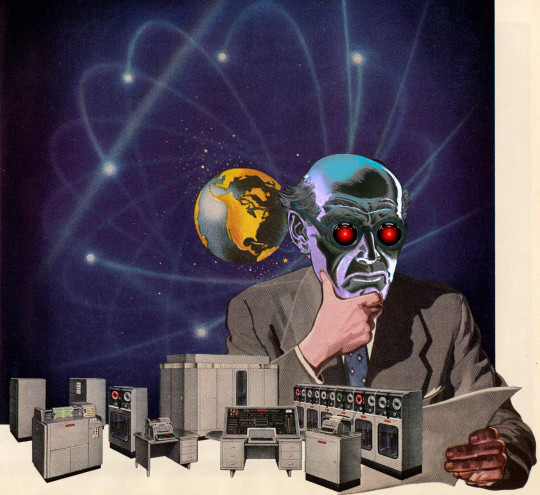
If you'd like an essay-formatted version of this post to read or share, here's a link to it on pluralistic.net, my surveillance-free, ad-free, tracker-free blog:
https://pluralistic.net/2024/02/08/permanent-overlords/#republicans-want-to-defund-the-police

Before "disruption" turned into a punchline, it was a genuinely exciting idea. Using technology, we could connect people to one another and allow them to collaborate, share, and cooperate to make great things happen.
It's easy (and valid) to dismiss the "disruption" of Uber, which "disrupted" taxis and transit by losing $31b worth of Saudi royal money in a bid to collapse the world's rival transportation system, while quietly promising its investors that it would someday have pricing power as a monopoly, and would attain profit through price-gouging and wage-theft.
Uber's disruption story was wreathed in bullshit: lies about the "independence" of its drivers, about the imminence of self-driving taxis, about the impact that replacing buses and subways with millions of circling, empty cars would have on traffic congestion. There were and are plenty of problems with traditional taxis and transit, but Uber magnified these problems, under cover of "disrupting" them away.
But there are other feats of high-tech disruption that were and are genuinely transformative – Wikipedia, GNU/Linux, RSS, and more. These disruptive technologies altered the balance of power between powerful institutions and the businesses, communities and individuals they dominated, in ways that have proven both beneficial and durable.
When we speak of commercial disruption today, we usually mean a tech company disrupting a non-tech company. Tinder disrupts singles bars. Netflix disrupts Blockbuster. Airbnb disrupts Marriott.
But the history of "disruption" features far more examples of tech companies disrupting other tech companies: DEC disrupts IBM. Netscape disrupts Microsoft. Google disrupts Yahoo. Nokia disrupts Kodak, sure – but then Apple disrupts Nokia. It's only natural that the businesses most vulnerable to digital disruption are other digital businesses.
And yet…disruption is nowhere to be seen when it comes to the tech sector itself. Five giant companies have been running the show for more than a decade. A couple of these companies (Apple, Microsoft) are Gen-Xers, having been born in the 70s, then there's a couple of Millennials (Amazon, Google), and that one Gen-Z kid (Facebook). Big Tech shows no sign of being disrupted, despite the continuous enshittification of their core products and services. How can this be? Has Big Tech disrupted disruption itself?
That's the contention of "Coopting Disruption," a new paper from two law profs: Mark Lemley (Stanford) and Matthew Wansley (Yeshiva U):
https://papers.ssrn.com/sol3/papers.cfm?abstract_id=4713845
The paper opens with a review of the literature on disruption. Big companies have some major advantages: they've got people and infrastructure they can leverage to bring new products to market more cheaply than startups. They've got existing relationships with suppliers, distributors and customers. People trust them.
Diversified, monopolistic companies are also able to capture "involuntary spillovers": when Google spends money on AI for image recognition, it can improve Google Photos, YouTube, Android, Search, Maps and many other products. A startup with just one product can't capitalize on these spillovers in the same way, so it doesn't have the same incentives to spend big on R&D.
Finally, big companies have access to cheap money. They get better credit terms from lenders, they can float bonds, they can tap the public markets, or just spend their own profits on R&D. They can also afford to take a long view, because they're not tied to VCs whose funds turn over every 5-10 years. Big companies get cheap money, play a long game, pay less to innovate and get more out of innovation.
But those advantages are swamped by the disadvantages of incumbency, all the various curses of bigness. Take Arrow's "replacement effect": new companies that compete with incumbents drive down the incumbents' prices and tempt their customers away. But an incumbent that buys a disruptive new company can just shut it down, and whittle down its ideas to "sustaining innovation" (small improvements to existing products), killing "disruptive innovation" (major changes that make the existing products obsolete).
Arrow's Replacement Effect also comes into play before a new product even exists. An incumbent that allows a rival to do R&D that would eventually disrupt its product is at risk; but if the incumbent buys this pre-product, R&D-heavy startup, it can turn the research to sustaining innovation and defund any disruptive innovation.
Arrow asks us to look at the innovation question from the point of view of the company as a whole. Clayton Christensen's "Innovator's Dilemma" looks at the motivations of individual decision-makers in large, successful companies. These individuals don't want to disrupt their own business, because that will render some part of their own company obsolete (perhaps their own division!). They also don't want to radically change their customers' businesses, because those customers would also face negative effects from disruption.
A startup, by contrast, has no existing successful divisions and no giant customers to safeguard. They have nothing to lose and everything to gain from disruption. Where a large company has no way for individual employees to initiate major changes in corporate strategy, a startup has fewer hops between employees and management. What's more, a startup that rewards an employee's good idea with a stock-grant ties that employee's future finances to the outcome of that idea – while a giant corporation's stock bonuses are only incidentally tied to the ideas of any individual worker.
Big companies are where good ideas go to die. If a big company passes on its employees' cool, disruptive ideas, that's the end of the story for that idea. But even if 100 VCs pass on a startup's cool idea and only one VC funds it, the startup still gets to pursue that idea. In startup land, a good idea gets lots of chances – in a big company, it only gets one.
Given how innately disruptable tech companies are, given how hard it is for big companies to innovate, and given how little innovation we've gotten from Big Tech, how is it that the tech giants haven't been disrupted?
The authors propose a four-step program for the would-be Tech Baron hoping to defend their turf from disruption.
First, gather information about startups that might develop disruptive technologies and steer them away from competing with you, by investing in them or partnering with them.
Second, cut off any would-be competitor's supply of resources they need to develop a disruptive product that challenges your own.
Third, convince the government to pass regulations that big, established companies can comply with but that are business-killing challenges for small competitors.
Finally, buy up any company that resists your steering, succeeds despite your resource war, and escapes the compliance moats of regulation that favors incumbents.
Then: kill those companies.
The authors proceed to show that all four tactics are in play today. Big Tech companies operate their own VC funds, which means they get a look at every promising company in the field, even if they don't want to invest in them. Big Tech companies are also awash in money and their "rival" VCs know it, and so financial VCs and Big Tech collude to fund potential disruptors and then sell them to Big Tech companies as "aqui-hires" that see the disruption neutralized.
On resources, the authors focus on data, and how companies like Facebook have explicit policies of only permitting companies they don't see as potential disruptors to access Facebook data. They reproduce internal Facebook strategy memos that divide potential platform users into "existing competitors, possible future competitors, [or] developers that we have alignment with on business models." These categories allow Facebook to decide which companies are capable of developing disruptive products and which ones aren't. For example, Amazon – which doesn't compete with Facebook – is allowed to access FB data to target shoppers. But Messageme, a startup, was cut off from Facebook as soon as management perceived them as a future rival. Ironically – but unsurprisingly – Facebook spins these policies as pro-privacy, not anti-competitive.
These data policies cast a long shadow. They don't just block existing companies from accessing the data they need to pursue disruptive offerings – they also "send a message" to would-be founders and investors, letting them know that if they try to disrupt a tech giant, they will have their market oxygen cut off before they can draw breath. The only way to build a product that challenges Facebook is as Facebook's partner, under Facebook's direction, with Facebook's veto.
Next, regulation. Starting in 2019, Facebook started publishing full-page newspaper ads calling for regulation. Someone ghost-wrote a Washington Post op-ed under Zuckerberg's byline, arguing the case for more tech regulation. Google, Apple, OpenAI other tech giants have all (selectively) lobbied in favor of many regulations. These rules covered a lot of ground, but they all share a characteristic: complying with them requires huge amounts of money – money that giant tech companies can spare, but potential disruptors lack.
Finally, there's predatory acquisitions. Mark Zuckerberg, working without the benefit of a ghost writer (or in-house counsel to review his statements for actionable intent) has repeatedly confessed to buying companies like Instagram to ensure that they never grow to be competitors. As he told one colleague, "I remember your internal post about how Instagram was our threat and not Google+. You were basically right. The thing about startups though is you can often acquire them.”
All the tech giants are acquisition factories. Every successful Google product, almost without exception, is a product they bought from someone else. By contrast, Google's own internal products typically crash and burn, from G+ to Reader to Google Videos. Apple, meanwhile, buys 90 companies per year – Tim Apple brings home a new company for his shareholders more often than you bring home a bag of groceries for your family. All the Big Tech companies' AI offerings are acquisitions, and Apple has bought more AI companies than any of them.
Big Tech claims to be innovating, but it's really just operationalizing. Any company that threatens to disrupt a tech giant is bought, its products stripped of any really innovative features, and the residue is added to existing products as a "sustaining innovation" – a dot-release feature that has all the innovative disruption of rounding the corners on a new mobile phone.
The authors present three case-studies of tech companies using this four-point strategy to forestall disruption in AI, VR and self-driving cars. I'm not excited about any of these three categories, but it's clear that the tech giants are worried about them, and the authors make a devastating case for these disruptions being disrupted by Big Tech.
What do to about it? If we like (some) disruption, and if Big Tech is enshittifying at speed without facing dethroning-by-disruption, how do we get the dynamism and innovation that gave us the best of tech?
The authors make four suggestions.
First, revive the authorities under existing antitrust law to ban executives from Big Tech companies from serving on the boards of startups. More broadly, kill interlocking boards altogether. Remember, these powers already exist in the lawbooks, so accomplishing this goal means a change in enforcement priorities, not a new act of Congress or rulemaking. What's more, interlocking boards between competing companies are illegal per se, meaning there's no expensive, difficult fact-finding needed to demonstrate that two companies are breaking the law by sharing directors.
Next: create a nondiscrimination policy that requires the largest tech companies that share data with some unaffiliated companies to offer data on the same terms to other companies, except when they are direct competitors. They argue that this rule will keep tech giants from choking off disruptive technologies that make them obsolete (rather than competing with them).
On the subject of regulation and compliance moats, they have less concrete advice. They counsel lawmakers to greet tech giants' demands to be regulated with suspicion, to proceed with caution when they do regulate, and to shape regulation so that it doesn't limit market entry, by keeping in mind the disproportionate burdens regulations put on established giants and small new companies. This is all good advice, but it's more a set of principles than any kind of specific practice, test or procedure.
Finally, they call for increased scrutiny of mergers, including mergers between very large companies and small startups. They argue that existing law (Sec 2 of the Sherman Act and Sec 7 of the Clayton Act) both empower enforcers to block these acquisitions. They admit that the case-law on this is poor, but that just means that enforcers need to start making new case-law.
I like all of these suggestions! We're certainly enjoying a more activist set of regulators, who are more interested in Big Tech, than we've seen in generations.
But they are grossly under-resourced even without giving them additional duties. As Matt Stoller points out, "the DOJ's Antitrust Division has fewer people enforcing anti-monopoly laws in a $24 trillion economy than the Smithsonian Museum has security guards."
https://www.thebignewsletter.com/p/congressional-republicans-to-defund
What's more, Republicans are trying to slash their budgets even further. The American conservative movement has finally located a police force they're eager to defund: the corporate police who defend us all from predatory monopolies.

Image: Cryteria (modified) https://commons.wikimedia.org/wiki/File:HAL9000.svg
CC BY 3.0 https://creativecommons.org/licenses/by/3.0/deed.en
#pluralistic#coopting disruption#law and political economy#law#economics#competition#big tech#tech#innovation#acquihires#predatory acquisitions#mergers and acquisitions#disruption#schumpeter#the curse of bigness#clay christensen#josef schumpeter#christensen#enshittiification#business#regulation#scholarship
290 notes
·
View notes
Text
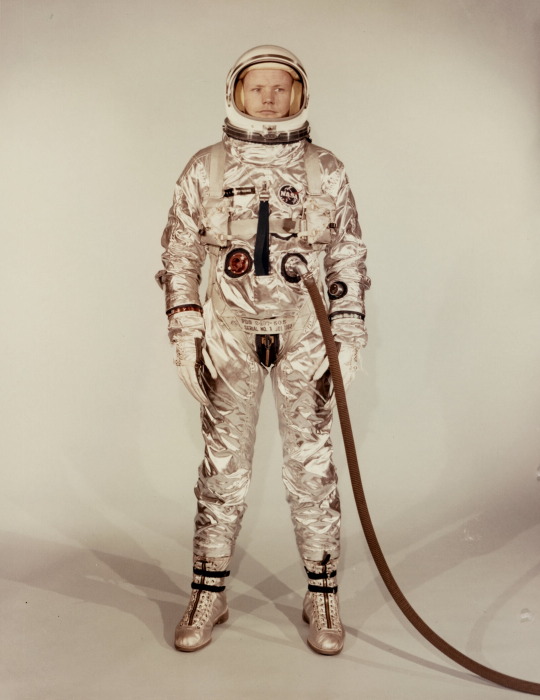
Neil Armstrong Vintage NASA "Black Number" Color Photo, Image S-64-17092: Full Length Portrait in Silver Spacesuit.
An original chromogenic 8" x 10" image of Armstrong in helmet and spacesuit prior to his Gemini mission, on Kodak fiber-based paper bearing the "A Kodak Paper" watermark on the verso.
107 notes
·
View notes
Text


Jerry D. Drew and his wife Helen W. Drew • Maids o’ the Mist, 1921.
In their own words: “This picture was made with a vest pocket Kodak fitted with a Goerz Dagor F 6.3. It was a rainy day and we made the exposure under an umbrella. The film was enlarged to 6½×8½ on Illingworth De Luxe paper, cream-colored stock, imported from England (it took about three months to get it.”)
The quality of this photo is really poor, but I just loved the description that came with it and it reminds me of "The Flatiron Building" (New York City, 1904) by Edward Steichen.
36 notes
·
View notes
Text


My first paperback that is not a script for uni lectures :D Finding a place that would print the cover was difficult. The ladies at the copy shop I went to first were extremely rude and I ended up not getting the covers done there, which is ironic since a copying machine plays a huge role in this fic. It is now glossy photo paper and because it had a kodak print on the back, I had to laminate it with some green paper.
I did the typeset and the cover design. The story is "Fuck the Monarchy" by @iwouldnevergetintofanfic. It is a Young Royals fanfic and it is free to read on AO3. It is Wilmon endgame, just in case you're anxious about season 3 ;D.
#wilmon#young royals#young royals fanfiction#yr fanfic#young royals fanfic#fanfiction#itsme_hi_imtheproblem#bookbindersoftumblr#bookbinding#book binding#fuck the monarchy#misuse of the copy room#paperback
60 notes
·
View notes
Text
hey who wants to see some photos i took on film that expired in 1959

So I bought another Weird Little Camera on eBay, only this one takes 127 film, a format that is no longer widely manufactured. The best and cheapest way to test it (which would also provide me with the backing paper and spindle I would need to cut down 120 film to fit if the camera worked) was to buy some expired film, and I happened upon a couple rolls of Kodak Tri-X on eBay that expired in 1959. I was very excited to try these out and see if I could get any images from them, and happily I got several that were quite nice!


There was a bit of a learning curve advancing the film, so I got a few overlapping frames. (Though that first double exposure there was done on purpose, for the whimsy of it.) I stand developed the film in Flic Film Black/White & Green at 1:100 dilution for an hour, as is my habit, agitating once halfway through. (This also helpfully allowed me to avoid guessing at what the developing time might be like.) It took me several minutes to get the film onto the developing reel because it was so tightly curled, and I ended up spooling it on with the emulsion facing outwards, which gave me some trouble with one frame where the end of the film contacted it during development:

I'm really pleased with the results overall though! They have a moody feel to them that I really enjoy. I've got one more roll in my film fridge and I have yet to figure out what to do with it. (I also have my eye on the last two rolls that seller has up on eBay.)

As a bonus, here's a phone photo of my weird little camera, plus the film! It's a Yashica 44LM, originally purchased by its first owner in 1961. The light meter, alas, doesn't work, but I have a shoe-mount meter now that I quite like. I'm also having a devil of a time figuring out how to attach a strap to the proprietary lugs. My current plan is to 3D print a mockup connector to test my measurements and then send the .STL file to my engineer friend who's offered to use the machine shop in his garage to fabricate something in metal.

16 notes
·
View notes
Text
Unveiling the Top Picks: The Best Photo Papers for Stunning Prints

Welcome to the world of photography, where every detail matters and every print tells a story. In this guide, we're diving deep into the realm of photo papers, uncovering the top picks that will elevate your prints to new heights. Whether you're a professional photographer or a passionate hobbyist, these premium photo papers are sure to deliver exceptional results that will leave a lasting impression.
1. Kodak Ultra Premium Photo Paper: Renowned for its superior quality and vibrant colors, Kodak Ultra Premium Photo Paper is a favorite among photographers seeking stunning prints that stand the test of time. With its advanced ink absorption technology and quick-dry surface, this paper ensures sharp detail and smudge-free results, making it ideal for both glossy and matte finishes.
2. Canon Photo Paper Pro Platinum: For those who demand nothing but the best, Canon Photo Paper Pro Platinum is the ultimate choice. Engineered for professional-grade printing, this paper boasts a high-gloss finish that enhances color vibrancy and contrast, resulting in gallery-worthy prints that dazzle the eye. Its heavyweight construction and archival-quality coating make it perfect for preserving cherished memories for generations to come.
3. Epson Ultra Premium Photo Paper Luster: Epson Ultra Premium Photo Paper Luster strikes the perfect balance between glossy and matte, offering a subtle sheen that enhances image depth and clarity. Designed for photographers who prioritize professional results without the glare, this paper delivers rich blacks, smooth tonal transitions, and exceptional color accuracy, making it an excellent choice for portrait and landscape photography alike.
4. HP Premium Plus Photo Paper Glossy: Experience the brilliance of true-to-life colors with HP Premium Plus Photo Paper Glossy. Engineered for optimal color saturation and sharpness, this paper produces vivid, smudge-resistant prints that capture every nuance of your photographs. Its instant-dry coating ensures quick handling and minimal drying time, making it perfect for projects that demand efficiency without sacrificing quality.

5. VMS Photo Papers: Explore the extensive range of VMS Photo Papers, including the best photo papers such as VMS Deluxe, VMS DigiPrint, VMS EcoPlus, VMS Imperial, VMS Professional, and more. Each brand offers unique features and benefits, ensuring vibrant color reproduction, archival-quality longevity, and stunning prints that exceed expectations. Whether you're printing family portraits, professional portfolios, or artistic masterpieces, VMS Photo Papers deliver exceptional results that elevate your photography to new heights.
6. Hammermill Premium Color Copy Cover Paper: When it comes to professional-grade printing, Hammermill Premium Color Copy Cover Paper sets the standard for excellence. With its heavyweight construction and ultra-smooth finish, this paper is ideal for high-resolution photo prints that demand exceptional clarity and detail. Whether you're creating portfolio-worthy images or eye-catching marketing materials, Hammermill delivers unparalleled results every time.
7. Moab Lasal Exhibition Luster: Elevate your prints to gallery status with Moab Lasal Exhibition Luster paper. Engineered for professional photographers and fine art enthusiasts, this paper features a subtle texture that adds depth and dimension to your images. Its archival-quality construction ensures longevity and durability, making it perfect for museum-quality prints that captivate the imagination.
Conclusion: Elevate Your Prints with the Best Photo Papers Your photographs deserve to be showcased in the best possible light, and with these top picks for photo papers, you can transform your images into works of art that captivate and inspire. Whether you prefer the glossy sheen of Kodak, the professional-grade quality of Canon, or the subtle elegance of VMS, there's a photo paper to suit every style and preference. Elevate your prints to new heights and unleash your creativity with the best photo papers on the market.
#best photo papers#a4 photo paper#glossy photo paper#Matte Paper#kodak photo paper#vms photo paper#vms cart
0 notes
Text
Bigfalcon Digi Print A4size Photo Paper For Your Extreme Needs
A4 size photo paper is nowadays highly practiced for digital printing, and one need to know its features to get all kind of benefits. It is developed to exceed studio standards, and Bigfalcon offers excellent beauty and seamless, realistic output. Premium resin-coated waterproof paper instantly dries and prints the image or picture without signs of fading.

A4 Size Photo Paper
Compatible paper
The photo paper is perfectly suited to most desktops and large-format printers. In addition to this, you will get experienced of uninterrupted services that makes you’re buying this kind of printing machine highly make sense and choice.
High grade realistic result
A4size photo paper is always recommended for providing printouts of your copy with higher resolution and clarity of picture. You will be amazed to see the amount of durability and flexibility it offers to your printing experience.
Buying an A4size photo paper will indeed give you all types of printing benefits as you can scan and take screenshots to work effectively engaged with your official work successfully. A4 size photo paper is recommended simply because it is the perfect size to get photos and images as per the requirements of your business brochures, fliers and visiting or business cards. A4 size usually gives you the best size to render more appealing images and turn them into virtual business objectives in a professional manner.
High-grade realistic image you can generate with A4 size photo paper. Bigfalcon inkjet paper comes in different variants and provides a premium and affordable range of photo paper for casual project deliberation.
Photograph lasts for a long time
The fade-resistant feature of photo paper is meant to protect photographs from gases and light and keep important memories protected for years. Your appealing and eye-catching photos look, and texture brings the photos class and excellence. Excellent paper and affordable cost are some of the pros of A4size photo paper extensively practiced for creating a new benchmark in printing services.
In conclusion
A4size photo paper is generally practiced and preferred for businesses as they work on and try to make their business logo appealing and captivate visitors or customers' attention. With that, A4size photo paper is highly preferred and worth a lot. Try to bring your images and photos real and trendiest.
#Glossy Photo Paper#Kodak Photo Paper#A4 Size Photo Paper#Waterproof photo paper#Lamination Pouch A4 Size#PVC Tray Manufacturer#Transparent sticker sheet#Sticker photo paper#Premium Lamination Pouch#Aadhar Pvc Card
0 notes
Note
dont answer this if its like weird or long but yk those disposable fujifilm/kodak cameras? And how you have to get them developed at like ur local CVS or walgreens?
Say reader works at one of those in-store photo developing centers– which one of your oc's would be most likely to take ALL their nudes on one of those cameras and ask worker!reader to print them out
I say this often, but we all know - this has C.C written all over it.
His ass is on full display the first photo you pull out. Probably wears one of those wedding lingerie pieces with a veil and the butt of the thong cut out in the shape of a heart. Shows himself off in every location and position he can think of. Spread out on his bed, hanging from the top of the stripper pole in his room. He swaps outfits too - favorites besides the bride outfit being slutty angel, his prized satin robe, and the shirt you lost in the wash last week. He plays innocent by posing for an tame pic with one of the pillows on his bed only to follow up with one of it between his thighs on the next slide. If he's really desperate, he'll sneak in a photo of his true form if he sees you wearing any kind of monster/demon memorabilia on you.
He bats those pretty lashes and props his elbows on the counter as you bring out his photos. Asking, "See anything you like?~" as he shrugs the sleeve of his tank top of his shoulder and sucks on the same brand of popsicle he was deep throating in one of his numerous stunts. He takes the envelope from you, but whoops he tore the paper with his claws and they spilled everywhere. Would you be a dear and help him pick them up? Preferably in the exact order you remember arranging them <3
#yandere oc#yandere#yandere x reader#yandere imagines#yandere x you#yandere headcanons#male yandere#yandere blurb#yandere incubus
209 notes
·
View notes
Photo
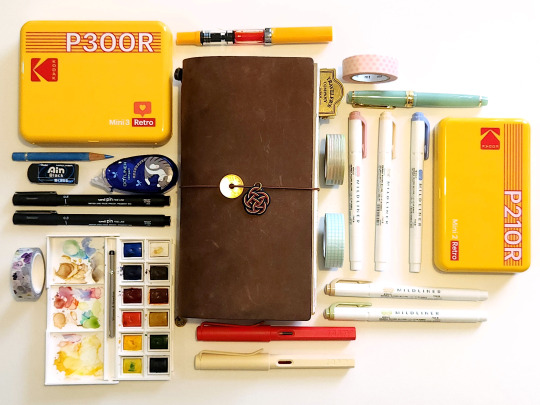
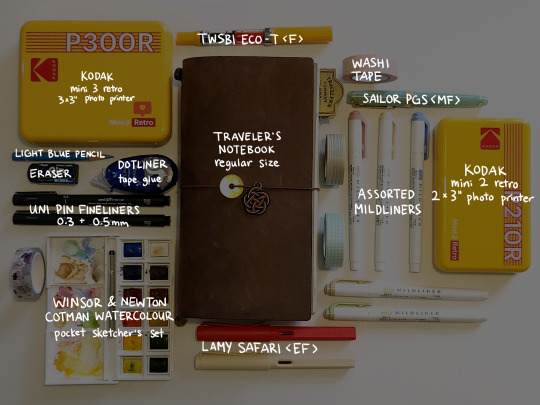





Someone on reddit asked about my journaling supplies so I thought I’d share here too!
Traveler's Notebook is my only journaling system, I started using it in 2017 and have been loving it ever since!
The 4 fountain pens shown are my current inked pens that I'm cycling through, the Sailor Pro Gear Slim is my newest baby 🥺🤧
Having both the Kodak Mini 3 Retro and Mini 2 Retro is probably unnecessary but it’s nice having options of printing my photos in either 3x3" or 2x3". The 3x3" sometimes take up a lot of space on the page, and the 2x3" is perfect for that spot on the inside cover of a TN insert. The Kodak photo paper is also less bulky than Fuji Instax films!
The Kokuyo Dotliner is super handy for sticking photos and ephemera on pages without using liquid glue or a glue stick, and I think it gives my pages a cleaner look as opposed to taping them down
The rest of my supplies are watercolours, assorted washi tape, markers/mildliners, fineliners, stickers, etc
#journaling#journaling supplies#art supplies#fountain pens#travelers notebook#lamy#twsbi#sailor pro gear slim#journal#doodles#kt pen talks
349 notes
·
View notes
Text
Kodak Moment
read on AO3
“Whatcha got there?” April put her hand on Splinter’s shoulder as she sidled up beside him at the kitchen table.
Splinter nearly jumped out of his fur—the book in his hands dropped the short few inches to the table.
“Sorry!” She withdrew her hand and took a step back.
He half-turned toward her, a smile on his kind face and a paw pressed over his heart. “Miss O’Neil. Sneaking up on an old ninja?”
She grinned sheepishly, then took a seat beside him. She’d noticed the four boys being a little jumpy the last few days they’d spent with her in the apartment. She chalked it up to worry about their home, but this seemed like a little more than that. “I thought you’d hear me coming,” she admitted.
“I must confess, I am unused to the sounds of footsteps on carpet. And all the noise outside, the building settling—how do you stand it?”
“You get used to it,” she said with a shrug. She tilted her head to get a better look at his reading material. “Oh, that’s my sister’s baby album.”
He pushed it toward her reverently, ears pressed against his head. “Forgive me, Miss O’Neil. I did not mean to intrude.”
“Oh, don’t worry about it!” She gave him the warmest smile she could muster.
She couldn’t express in words how much she wanted him and his sons to be comfortable in her home, or how badly she wanted to protect the little family. Instead, she opened the book and scooted closer to look with him.
“My sister thought she was the cat’s meow.” She pointed to a picture of her wearing a fluffy tutu, plastic tiara, and gap-toothed grin.
She watched his eyes soften as he looked over the photographs. “It seems that the two of you were very loved.”
April wanted to grab him by the shoulders and tell him that his sons were clearly loved too—just because he had to provide for them differently didn’t mean he loved them any less! She took a deep breath instead. “I bet the boys were adorable babies.”
He smiled, but there was a hint of sadness to it. “They were very sweet.” Splinter gently touched the face of a three year old April in a photo. “I have no pictures of them. That is perhaps my greatest regret.”
April blinked.
“My memory of them is shot through with who they have become. I’m sure it’s less accurate with each passing day.” The smile fell from his face and he withdrew his hands to his lap. In the nearby living room, a couple of the boys were arguing about the rules of whatever sport they were watching. “I fear that I someday will not remember at all.”
April drummed her fingers against the table. “Wait right here.”
Without waiting for Splinter to respond, she left the table and slipped down the stairs with her keys in hand, headed for the shop. Her father’s old polaroid camera sat on a shelf beneath the checkout counter, alongside a few dusty cannisters of film. He’d primarily used it to take pictures of particularly valuable antiques to be sent to auction, he had a nicer camcorder for family events that her sister had on the other side of the country. As April turned the camera over in her hands she remembered watching him point it at vases, stacks of china, and other curio that ended up in the store. He sometimes had her or Robin stand in the photos ‘for scale’. She wondered how many New York auction houses had photographs of their gap-toothed grins in their archives.
Her father would never have expected her to one day point the camera at mutant turtles. She smirked.
She took the stairs two at a time on the way up and marched right past Splinter into the living room. Mikey and Leo were still discussing the finer points of the game’s rules while Raph had moved closer to the TV in order to have a chance at hearing it, and Don was off in his own world on the floor nearby, surrounded by paper. Mikey had his head in Leo’s lap even as they bickered. Near the TV, Raph sat crisscross on the floor with his hands on his ankles—it was kind of adorable.
She held the camera up to her eye, aimed, and immortalized the scene.
The camera flashed the room white and brought her presence to the center of the ninjas’ attention. They went still and silent, only the mumble of sports announcers on the TV remained.
Leo was the first to recover, blinking. “Did you just…take our picture?”
She pulled the undeveloped photo out of the front of the camera and gave it a good shake. “Sure did. You boys have a problem with that?”
Don and Leo shared a look, then Leo and Raph, then Mikey and Don.
Donnie eventually shrugged. “We’ve never had our picture taken.”
Mikey leapt from the couch and scrambled into the camera’s view. “Get one of just me!” He leaned in conspiratorially, raising one hand to hide his mouth from his brothers, then spoke loud enough that they were all sure to hear him. “Careful, Raph’s indelicate visage might crack the lens.”
Raph leapt to his feet. “I’ll show you indelicate—c’mere!”
“Eep!”
They took off across the short length of the apartment and Mikey threw open the door. They both flew down the stairs, leaving the others to listen as the scuffle turned into cries of uncle, uncle!
April turned to the other boys, raising the camera. “How about we get in a few of you boys before Mikey hogs the film with glamour shots?”
They both laughed, and her heart swelled.
She had never known what it was like to be the older sibling until she met these boys. Before it all, she couldn’t have even imagined the love and endless protectiveness she would feel for them. Never in a million years could she have guessed what she’d be willing to do for their sake after just a couple of months.
“I don’t know what I’m supposed to do,” Don said awkwardly. He had put aside his notebook and pen, but there was still a ream’s worth of loose paper in piles around him.
“Strike a pose!”
He just looked at her, brow knit in the center.
She swung the camera’s strap over her head and let it dangle there as she guided Don to his feet, then pushed him to stand against a wall near the window. “Here, this way there’ll be plenty of light. Just do whatever feels natural to you.” She encouraged him with a smile, then backed up to ready the camera.
By the time she put her eye to the viewfinder and got Don in frame, he was holding his bō in both hands and smiling nervously. Well, she did tell him to act natural. For an oversized, sewer-dwelling turtle in New York City, she supposed that maybe this is as natural as it would get.
She snapped the picture. He blinked a few times, then came to stand at her shoulder while she shook out the photograph.
“Here.” She reached into her back pocket and held out the first photo. “That’s what it’ll look like when it’s done developing.
He tilted his head, examining it. “Do I really look like that?”
She peered down over his shoulder. “Well, sort of? It’s a little distorted because I was so far away from you. It’s not a great representation of your color, but yeah, that’s you.”
He took it very delicately, holding it by the white frame with only two fingers. It always amazed April how he had such large hands, so clearly scarred and calloused by his short lifetime of learning and building and providing, yet he managed to be so gentle with small and fragile things. He brought it closer to his face to study it, then traced the curve of his own shell with a finger.
“I’ll make you a deal,” April said quietly. “You can keep that one if I can keep this,” she held up the now-developed photograph of him. It was a much better representation of both his color and his character.
He considered it for a quiet moment, then nodded. “Deal.”
She grinned and winked at him. “Okay Leo, your turn!”
He waved his hands out in front of him and pressed himself further into the cushions of the couch. “No no, that’s okay April. Take some more of Don.”
“We need some of you too, silly.”
He grinned nervously, eyes darting around as he mapped his exit. “No, that’s alright.”
“Camera shy,” Donnie muttered. “Huh.”
April got a picture of Splinter, then one of he and Don together before Raph and Mikey made it back upstairs. There was a new tear in Raph’s mask, one of Mikey’s kneepads was facing the wrong direction, and there was a telltale red mark on Raph’s arm where Mikey must have gotten one good smack in before he was pummeled into the earth.
April pressed a hand to her mouth as they casually passed into the living room.
“Boys,” Splinter muttered to himself.
Mikey peered over Don’s shoulder to look at the original photo, then laughed. “Raph, you look like—”
Raph growled a low warning, already on the couch beside Leo.
“—A very handsome turtle,” he finished. “Probably the handsomest dude in the room.”
April held up the camera. “Are you ready for your glamour shots?”
His face lit up like a thousand watts. “Shell yeah, girl!”
Mikey stood against the same wall by the window that Don had and pulled a series of poses that had April nearly crying with laughter. Among them was a James Bond-esque pose with one side of his brow quirked and his hands posed like he was holding a pistol, a tongue-stuck-out face, an eyelids-inside-out face, and a voguelike pose that had Master Splinter fully hiding his face in his hands. He dragged Don and Raph into it eventually, standing at April’s shoulder and coaching them. She got a few good shots of the three of them that way, and one candid of Splinter sitting at the table watching with an idle, unbelievably fond smile as he watched them.
Not only did Leo steadfastly refuse to join the photoshoot, but he disappeared halfway through. April turned to ask him one more time, and his spot on the couch was just empty. No Leo, no katana, no trace. Raph shrugged it off and advised her not to take it personally.
“Leo’s just weird like that sometimes,” he said.
“Raphie is weird in different ways,” Mikey helpfully added.
She got a good noogie picture out of that one, even if it was a little blurry.
All three boys eventually lost interest—even Mikey, who was distracted by a particularly good play in the football game he’d nearly forgotten about. The evening carried on in relative normalcy, and April sat down with all the photos for Splinter to go through.
“I cannot thank you enough for your kindness, Miss O’Neil. My sons clearly care for you very much, and I must admit…I did not ever think they would make such a steadfast human friend. I owe you a great deal.”
“Oh please, you don’t owe me a thing. They saved my life, remember? Besides…” She trailed off, shuffling through the photos and smiling. “I’m pretty fond of those goofballs too.”
A bit of silence passed as they sorted through the photographs, broken by a thoughtful hum from Splinter.
“What?”
“You are not in any of the photos.”
Her heart swelled so full that she thought it might burst. “That’s okay. When I go out for dinner, I’m going to pick up a few more rolls of film. I want to see if Mikey can get Leonardo to pose for just a few pictures.”
He chuckled. “I would not count on it. When Leonardo sets his mind to something, I’m afraid he can be the most stubborn of my sons.”
April smirked. “I’m up for the challenge.”
April did indeed get some cameras while she was out, three bright yellow Kodaks each with twenty-seven Kodak Moment opportunities. When she got back to the apartment, she found that Leo had mysteriously reappeared while she was gone, sitting on the couch between Mikey and Donnie. The latter two boys looked up when she entered, but the first kept his snout pointedly in his book. She jerked her head toward the kitchen, and they both jumped up to follow her.
She pulled the boxes out of the paper bag and gave them their cameras stealthily. “These are for operation: picture of Leo. Give this one to Raph. Obviously you can use them for anything else you want too, but whoever gets a picture of your brother first gets brownie points in my book.”
Mikey’s face lit up. “Brownies?”
“No, brownie points, Mikey. It’s a term that originated in the Girl Scouts. No actual brownies.”
He pouted.
Dinner passed uneventfully in front of the TV, watching some corny old monster flick that Donnie was clearly itching to pick apart. Every time he opened his mouth to speak, Raph would pat his shoulder in a way that was somehow both placating and patronizing. He grew visibly irritated with the continued disregard for basic physics principals, and eventually April was having more fun watching him than the movie.
She and Donnie took the empty plates to the kitchen while he aired all one hour and twenty minutes worth of grievances to her. On the way back in, she made pointed eye contact with Mikey. He winked at her.
They all parted ways for sleep, and by morning April had forgotten about the whole ordeal. She walked past the boys doing their drills in the living room, honestly not an ideal space for it, and waved as she yawned.
She prepared her breakfast in a sleepy stupor, pleased to find someone had already brewed a pot of coffee. She slumped into a chair at the kitchen table, and that was when it happened.
There were scuffling sounds from the living room that made her eyes a little more awake, and then pounding footsteps in her direction that brought her to her feet. Mikey whizzed past, nothing but a blur of orange and green, and to her surprise, it was Leo who chased after him.
“Mikey!” he yelled, wrenching open the stairwell door that Mikey had slammed shut behind him. “I’m going to use your shell for a punch bowl!”
There were more pounding footsteps, this time on the stairs, and eventually several loud thumps followed by a flurry of ow ow ow! and uncle!
April stuck her head into the living room, wide eyed and looking for the answer.
Raph shrugged, perplexed but amused. Splinter had his hands folded together and his head bowed, she could recognize by then that it was his I’m not going to kill my sons meditation.
Donnie was the one who held out the bright yellow chunk of plastic. “He got exactly two before Leo went for his throat.”
She took the camera, laughing. “I’ll make sure this gets to a safe place. Proof of the urban legend, Leonardo Ninja Turtle!”
April pored over everything she had. Newspaper clippings, files salvaged from Don’s computers, old meeting places and communication methods. She even tried old friends, going to the homeless encampment where she had first met the Professor Donnie spoke so highly of.
There was simply nothing. They were gone without a trace, vanished into thin air with only their ruin of a home and some old pictures to prove they ever existed. She and Casey had picked over the rubble as much as they dared, calling for them and checking every nearby tunnel in case they had somehow escaped. The only comfort she had was that some of their heavy machinery was gone—the tunneler, the sub, and Raph’s shellcycle were all missing in action. April wasn’t stupid, it had occurred to her that the foot may have simply destroyed those too, or took the toys with them, but she hoped that wasn’t the case.
She looked over the photos again. She had plenty of the rest of the family, but only one of Leo—the one Mikey had risked his life to snap. It was a candid, Leo holding a sword and looking toward the camera as though his brother had just called his name. He looked happy, idle smile on his face and katana gripped tightly. That picture had been a priceless artefact only a few days later, when they weren’t sure if he would live or die. He had pulled through though, and survived worse battles since then. But now, all these years and wounds and scars later, he might be the only one alive.
He very well could be the last of his kind. It wasn’t a possibility she could ignore, no matter how many times Casey stubbornly insisted they had to be alive somewhere. It wasn’t like they could look any further with Karai’s little soldiers watching their every step, but he still insisted. Where could they possibly have gone? She knew Raph had that one friend, Mrs. Morrison, but she didn’t think they would bring danger to her doorstep like that. Besides herself, Casey, and the few in that homeless camp, they had no one to turn to. Nowhere to go.
Alone. Scared. Hurt. Without their leader, and most importantly, without their big brother.
She took a deep breath to fight back the tears gathering in her eyes. There was no sense in mourning until she knew they hadn’t made it, and she had more faith in her boys than to give up so soon. It had only been five days, she told herself. Only five days, less than a week. They had survived entire months alone in the Cretaceous period, surely they could handle a few days of New York.
Her little brothers were out there somewhere. She just had to keep hope.
#turtleposting#teenage mutant ninja turtles#tmnt#the ghost writes#tmnt fic#my fic#my writing#uhhh#i hate tagging fic
34 notes
·
View notes